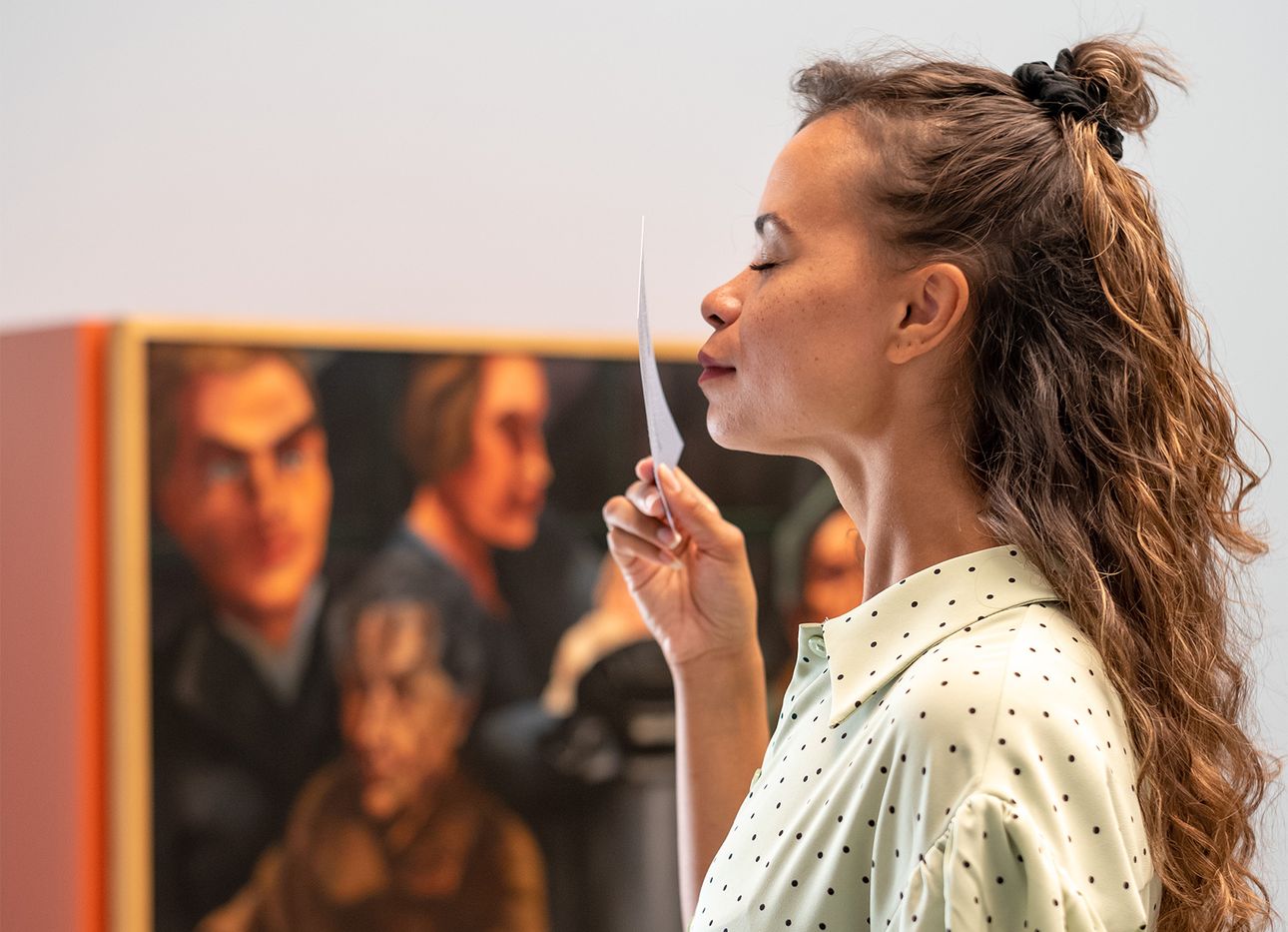
When Scent Meets the Museum, Do We See Art Differently?
In his 2005 essay “There Are No Visual Media,” visual culture scholar W.J.T. Mitchell argues that multiple senses are always involved in an optical experience. A growing number of exhibitions around the world leverage this idea by incorporating the most elusive yet most evocative of the senses—smell—into the works on view to foster a more holistic, embodied viewing experience.
In Eindhoven, the Netherlands, the Van Abbemuseum’s current exhibition “Delinking and Relinking” (through July 1, 2024) features pieces from its collection, enhanced with multisensory tools such as texts in Braille and tactile replications of works on view. The show’s scent pairings, though, might be the most intriguing. For several of the objects, the museum commissioned perfumer Jorg Hempenius—who worked with sensory art historians and, in some cases, with the artists themselves—to create a “scent storyline,” custom fragrances that can be accessed by visitors by means of perfumed cards or ambient aromas, which are distributed throughout the galleries via vaporization. For example, viewers standing before Belgian artist Jean Brusselmans’s 1936 painting “Le Bain des Vagabonds,” which captures the tension between urban and rural life via a group of boys diving into a pool set against a backdrop of a bustling cityscape, will get a whiff of fresh aquatic notes mixed with a faint, smoky smell that recalls the thick air of industry.
Artist Anicka Yi’s exhibition “In Love with the World” (through January 16, 2022), installed in the Tate Modern’s Turbine Hall, also uses scent to bring a certain setting to life—specifically, the expanse along the River Thames that surrounds the museum. Each week, an odor evoking a different period of the area’s olfactory past fills the space. Visitors might experience the troubling scent of cholera or the bubonic plague, or one of Yi’s more conceptual aromas, including scents made to evoke the experience of forgetting and a New York showroom owned by art dealer Larry Gagosian. The smells mingle with uncanny jellyfish-like forms, controlled by drone technology and algorithms, that float ominously through the air. (Yi discussed her practice, as well as the human relationship to nature and biology, on Ep. 14 of our At a Distance podcast last year.)
At the Central Pavilion of Venice’s 17th International Architecture Exhibition, the installation “Resurrecting the Sublime” (through November 21) allows viewers to smell extinct flowers that were lost due to human destruction of their habitats. The project’s team—including Dr. Alexandra Daisy Ginsberg, synthetic biologist Christina Agapakis, smell researcher and artist Sissel Tolaas, and researchers from the biotechnology company Ginkgo Bioworks—took small amounts of DNA extracted from specimens of three flowers from Harvard University’s Herbaria and Botany Library, and used synthetic biology to predict and resynthesize gene sequences that might lead to fragrance-producing enzymes. With these findings, Tolaas reconstructed each plant’s aroma using identical or similar smell molecules. In the presentation, each scent fills a large enclosed vitrine. To smell the aromas, visitors meander around the space—putting themselves, and their emotional reaction to inhaling an extinct scent, on display.
By using scent to reconstruct something that no longer exists—be it an extinct plant species or a real or imagined moment in history—fragrance-enhanced exhibitions can, at their best, bring people a step closer to work on view. With a scent drifting through their nostrils, viewers might be that much more open to contemplation, and to something all the more evocative and expansive.